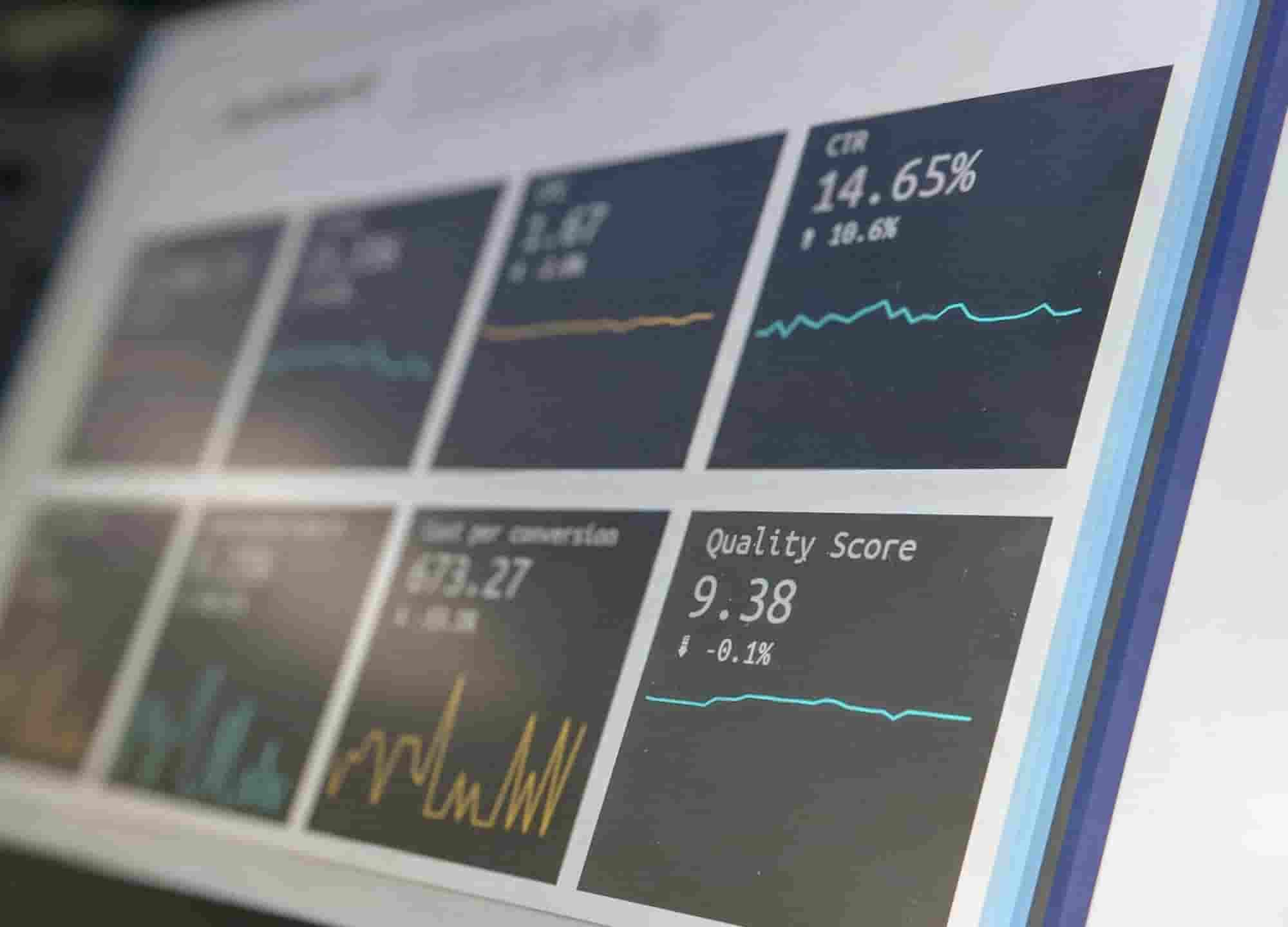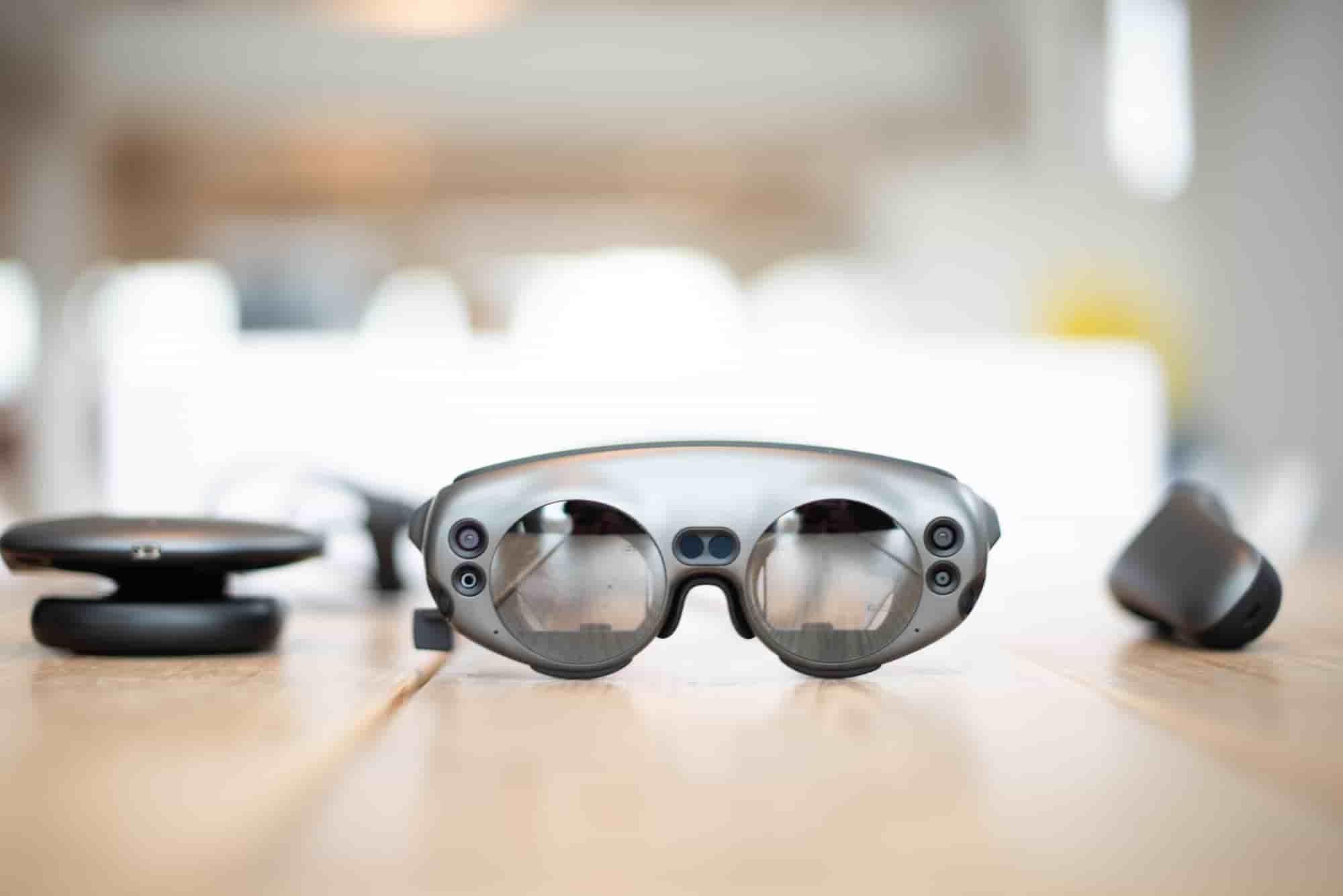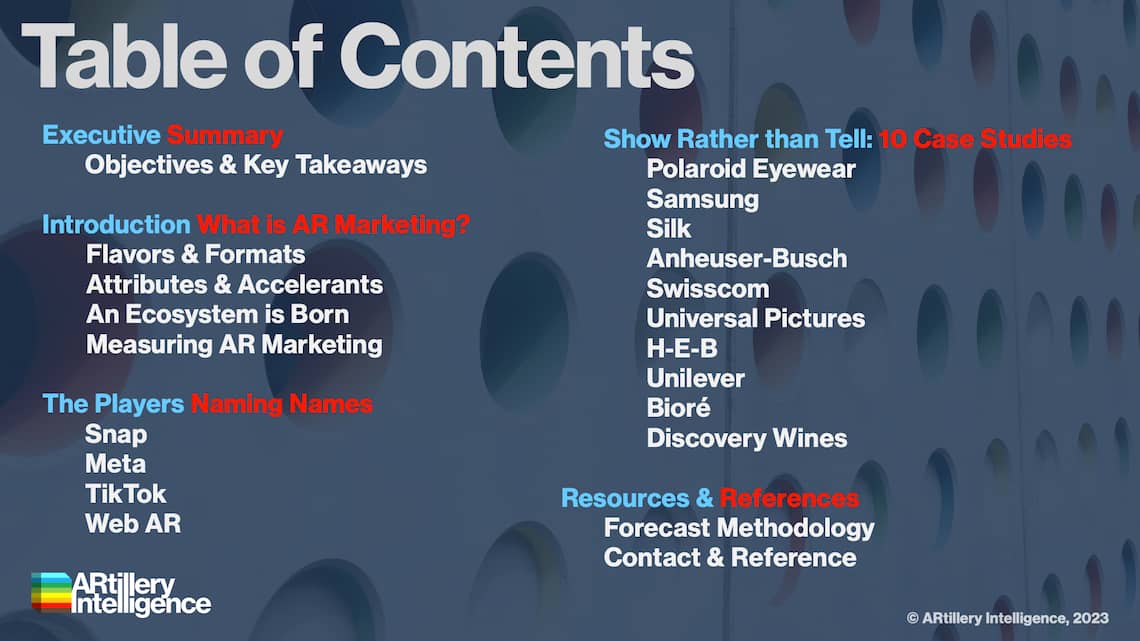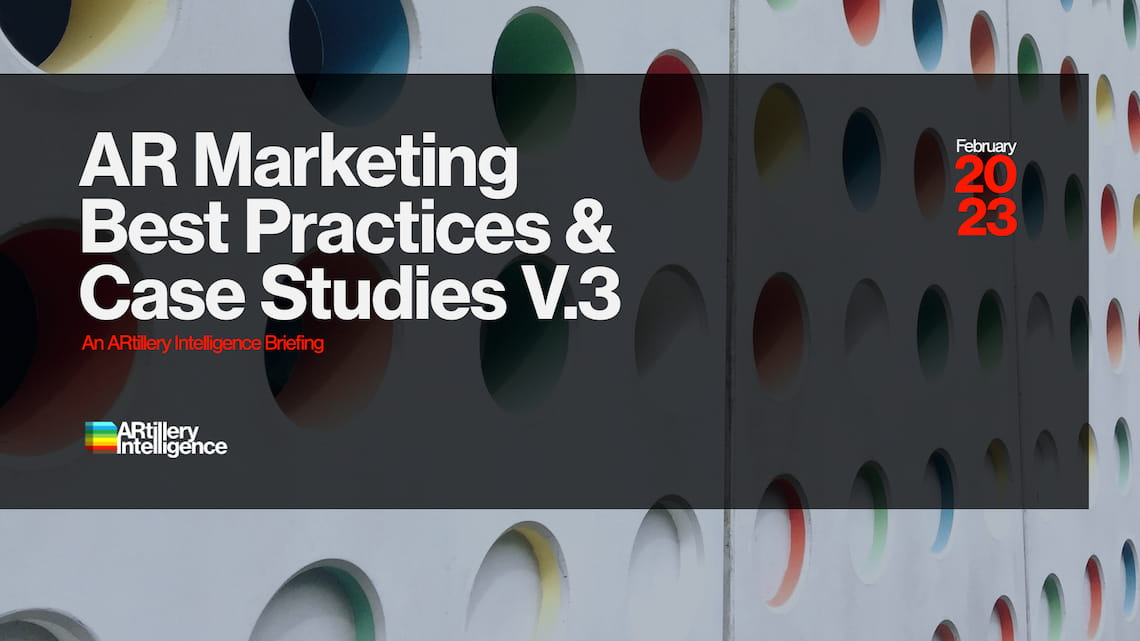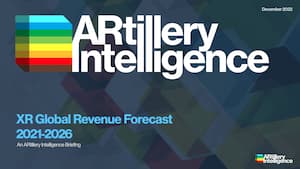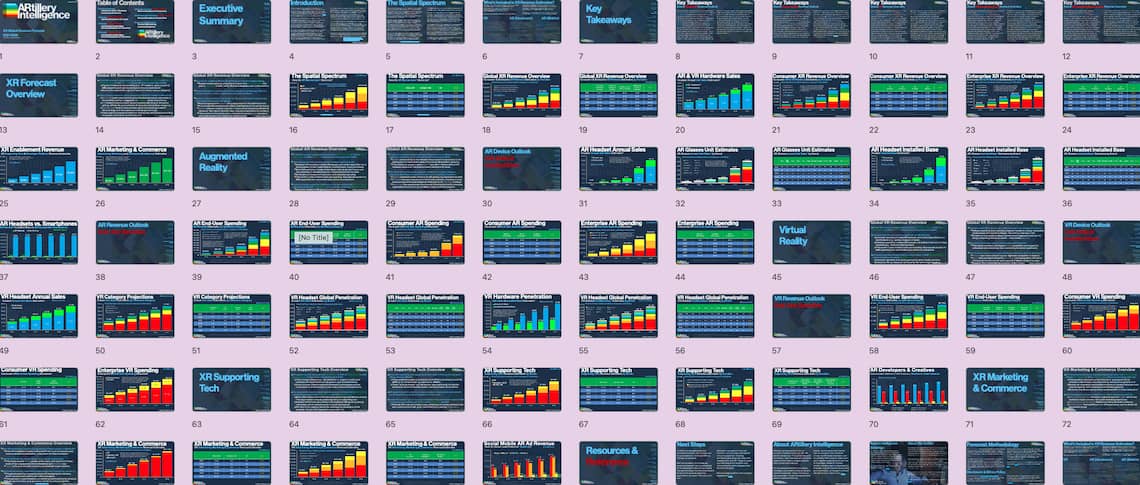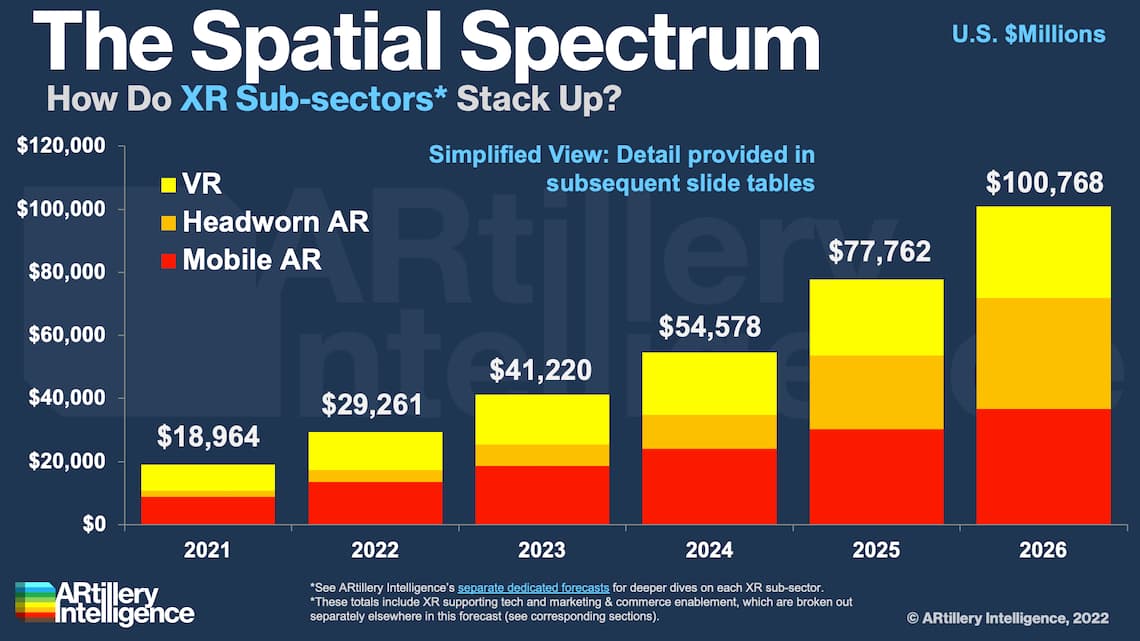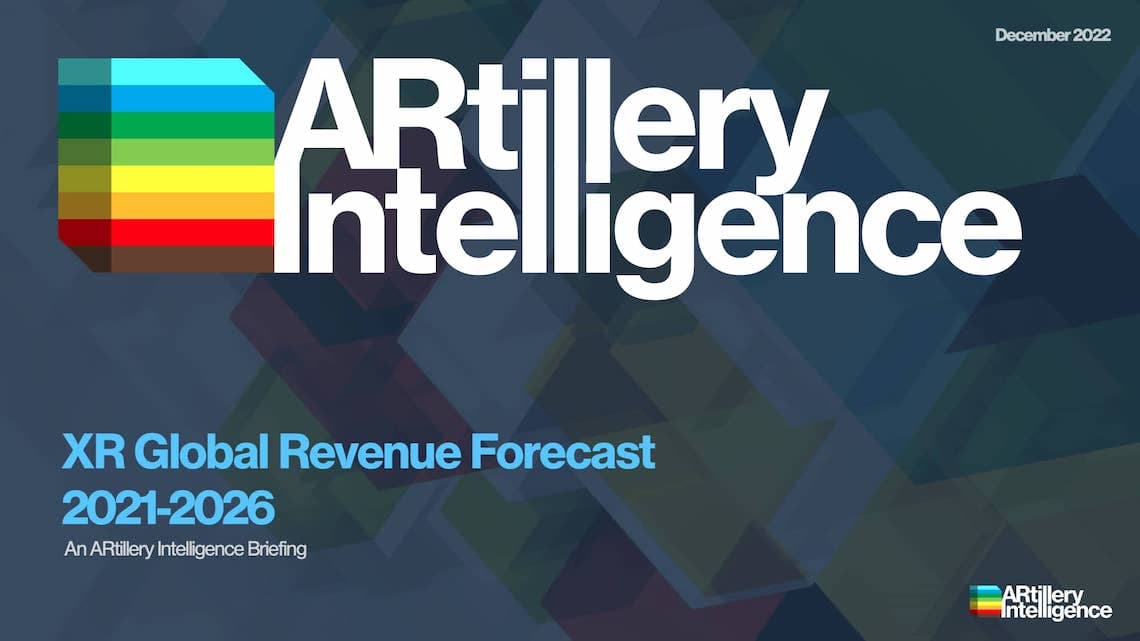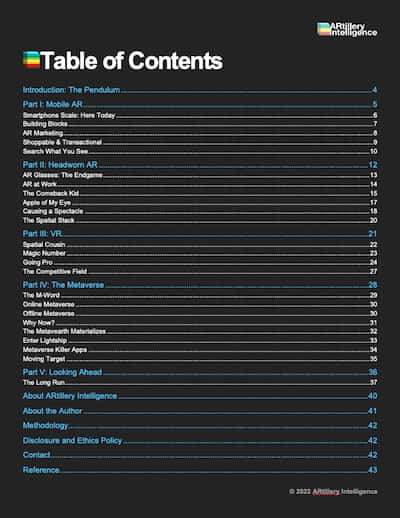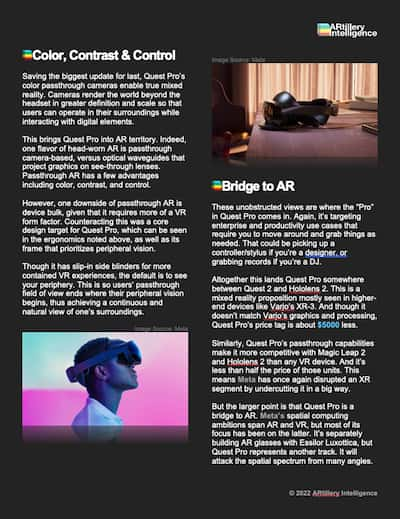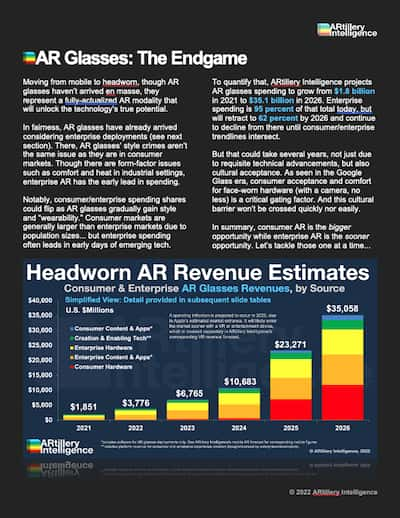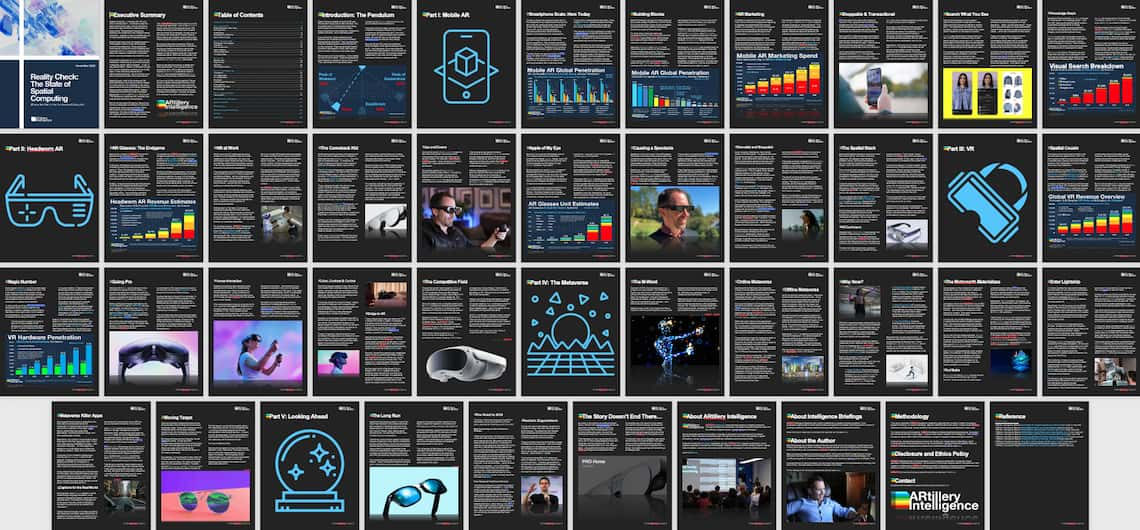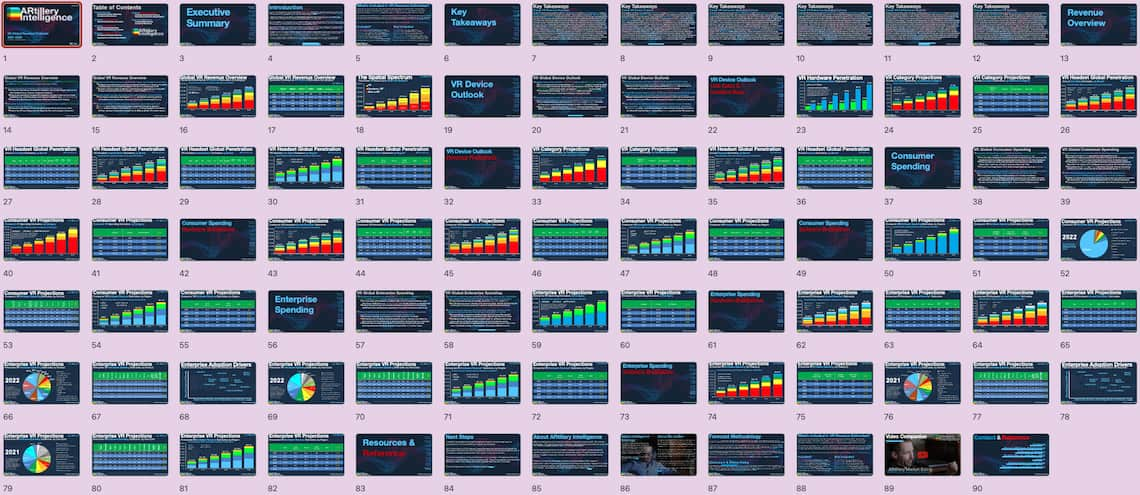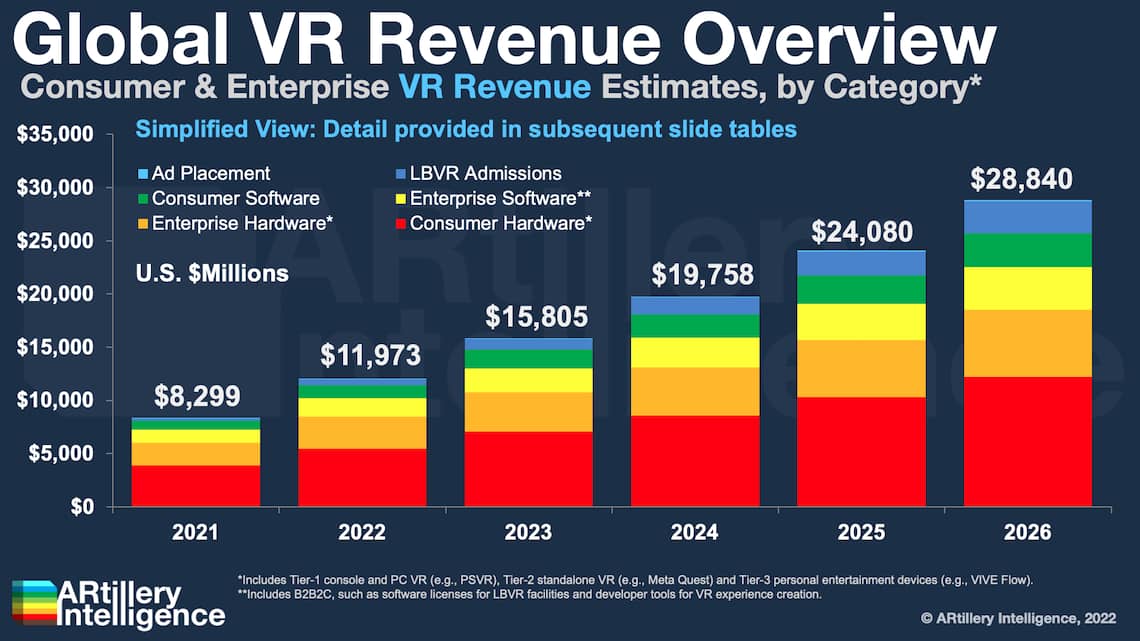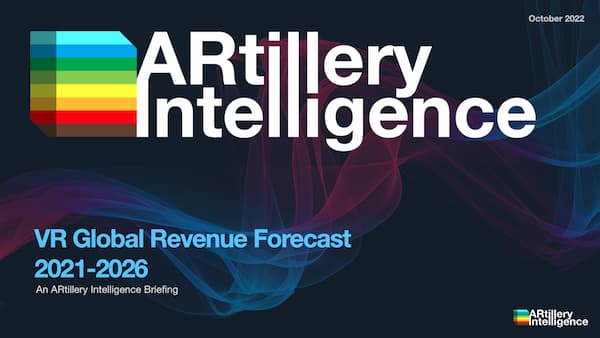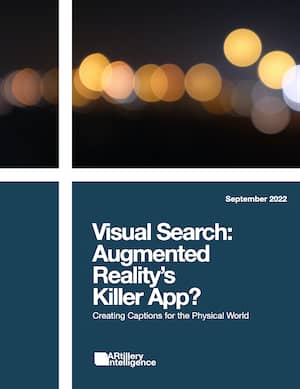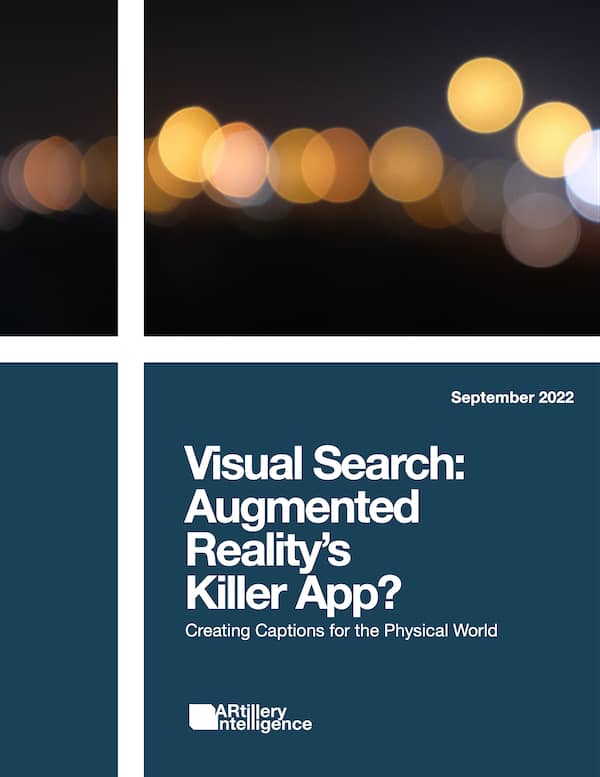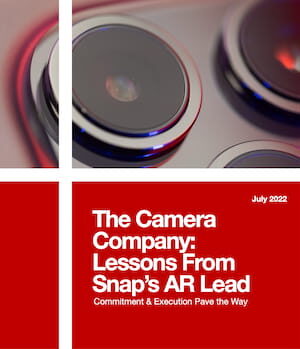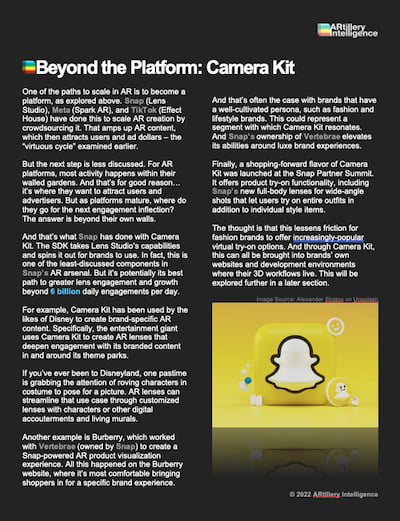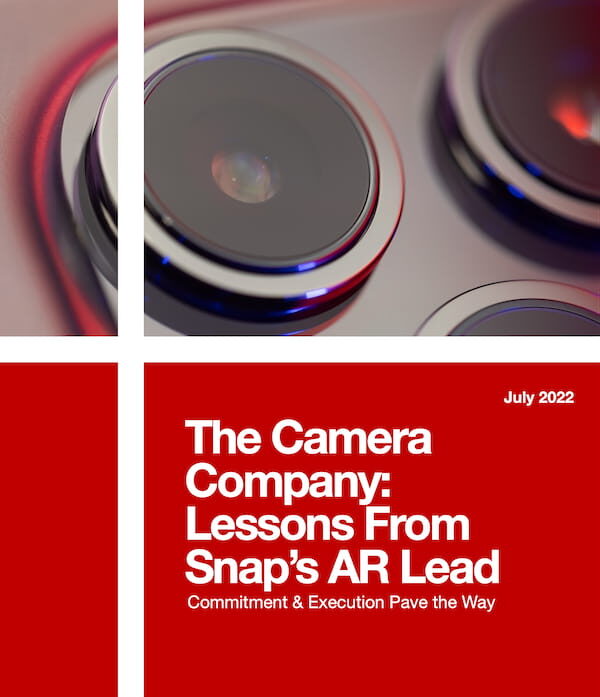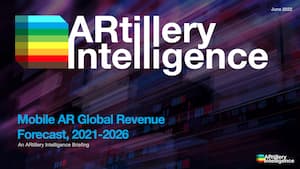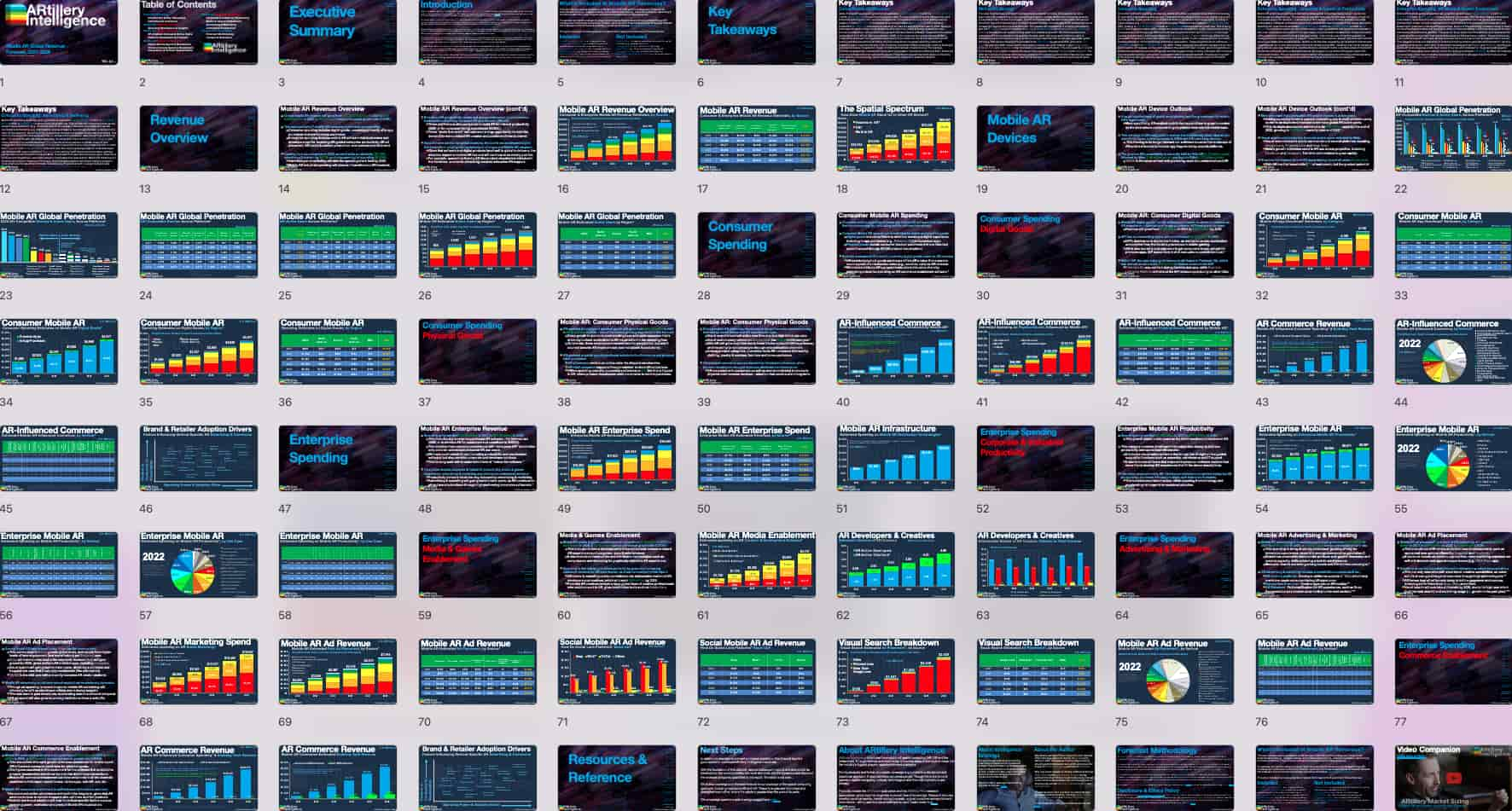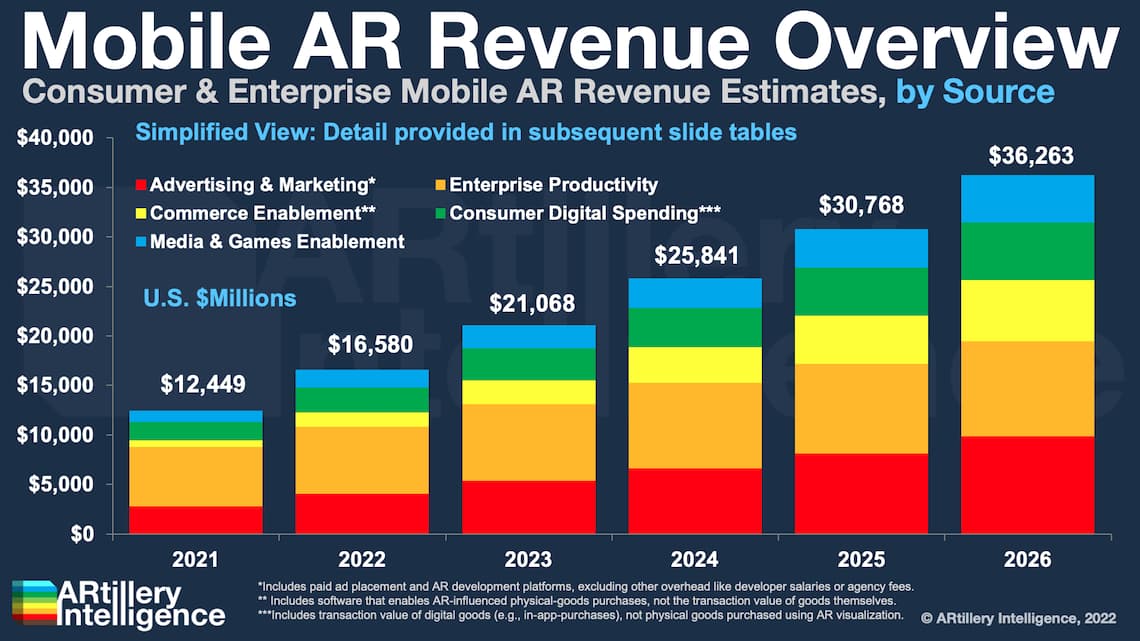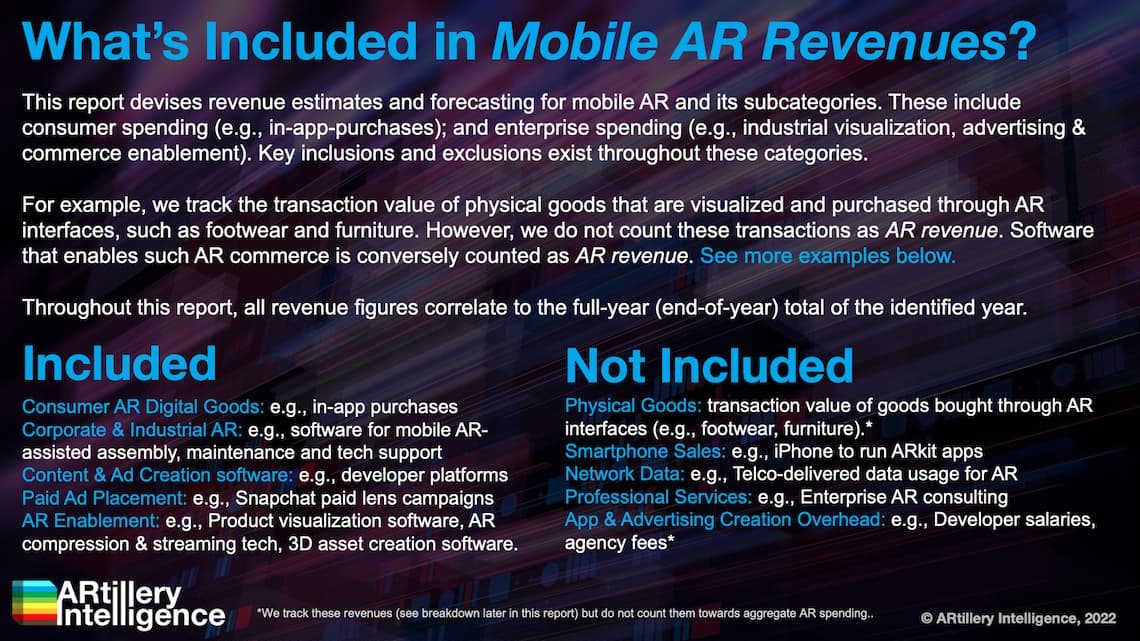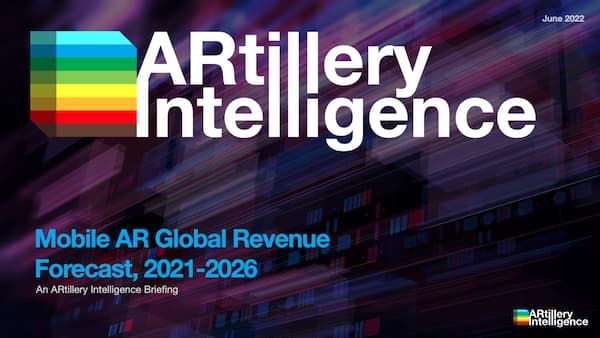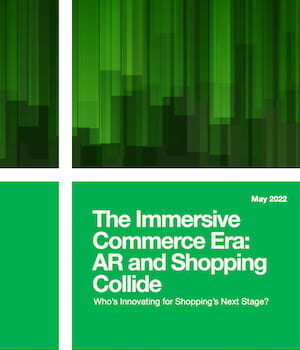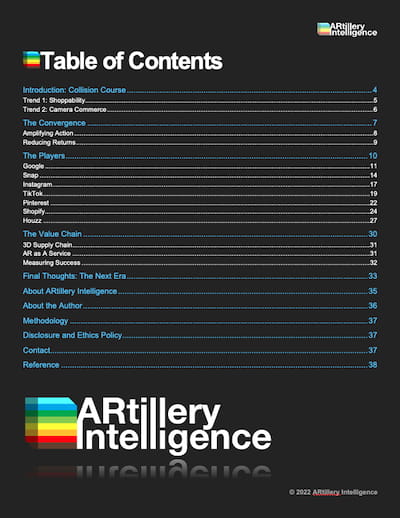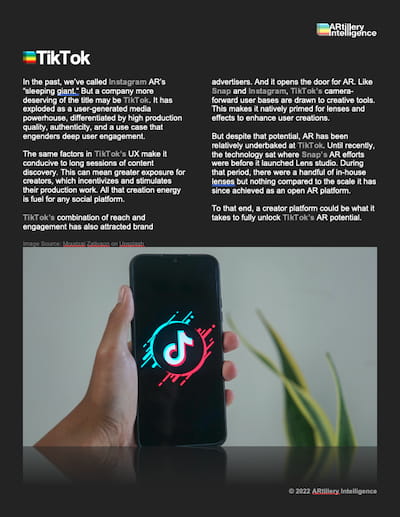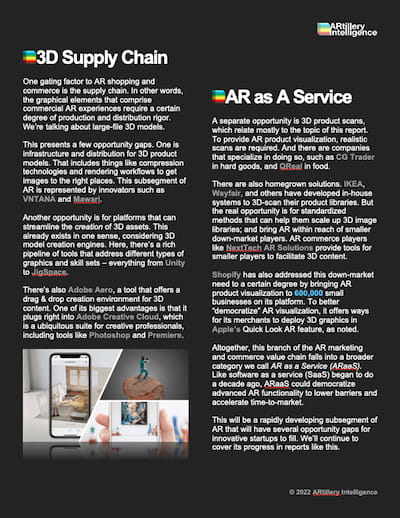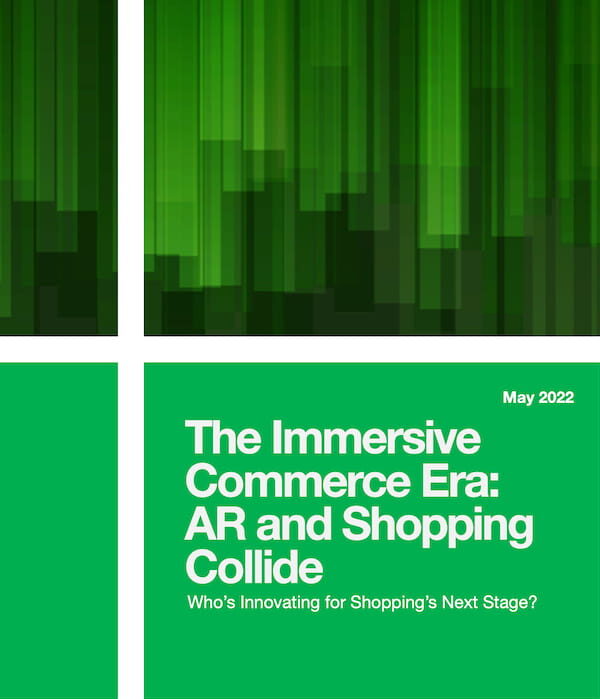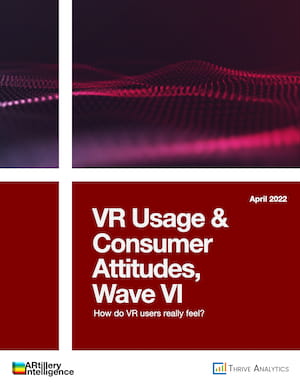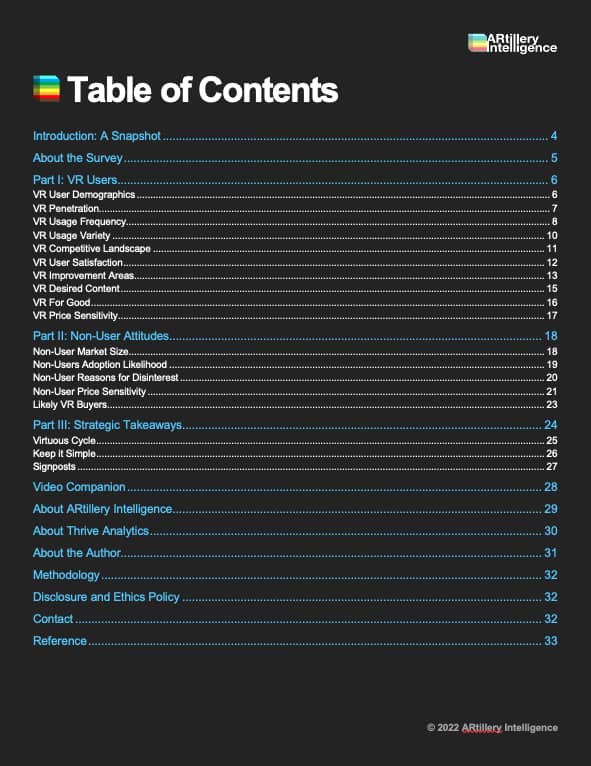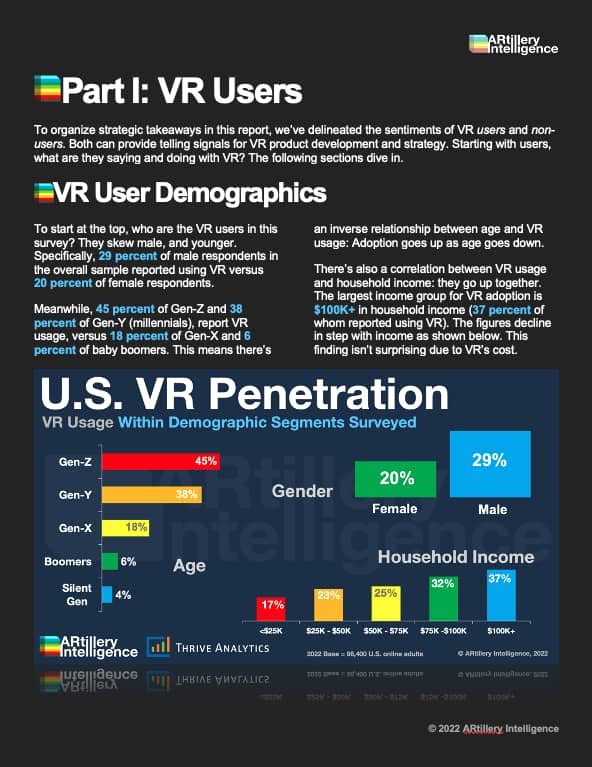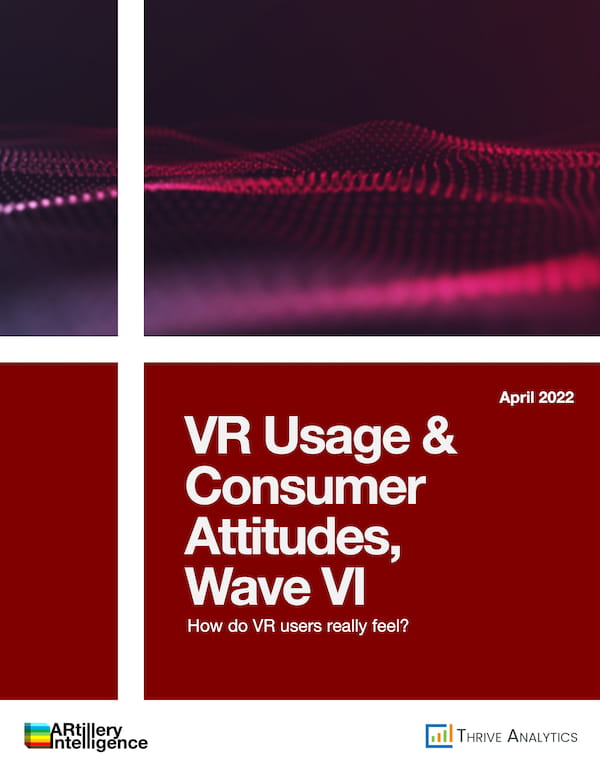Mobile AR Global Revenue Forecast: 2022-2027

Like many research & intelligence firms, one of the things that ARtillery Intelligence does is market sizing. A few times per year, we go into isolation and bury ourselves deep in financial modeling. This takes the insights and observations we accumulate throughout the year and synthesizes them into hard numbers for the current and future spatial computing industry.
The latest such effort zeroes in on mobile AR, which is projected to grow from $15.1 billion in 2022 to $39.8 billion in 2027. In fact, mobile AR revenue today exceeds other XR sectors we track, such as headworn AR and VR, as it piggybacks on a global base of 3.6 billion smartphones.
But that installed base doesn’t always translate to revenue. For example, consumer spending in mobile AR is relatively low, including digital goods such as in-app purchases in Pokémon Go. Though the game is still going strong, it’s a bit of an outlier as most consumers aren’t otherwise paying for AR experiences. Those that do mostly execute in-app purchases – an established and comfort-advantaged behavior due to its firm footing in mobile gaming. Bottom line: consumers largely aren’t buying AR apps.
Consumers are however buying physical goods with the help of AR. This involves AR product visualization and try-ons that add more dimension and consumer confidence in eCommerce consideration phases. This has resonated with consumers – especially in the eCommerce-heavy Covid era when AR got the chance to shine – as well as brands and retailers. These entities have meaningfully adopted AR in their marketing, as it helps them to demonstrate products with greater detail and dimension.
This brand adoption represents an area of AR spending we classify as B2B2C. It involves brands that utilize AR to create experiences for their customers or marketing targets. Put another way – and synthesizing a few points made so far – most mobile AR usage today is brand sponsored rather than consumer purchased. This same B2B2C principle applies in other categories in this forecast, including AR media & games development, as well as commerce enablement.
Beyond B2B2C, there’s also B2B spending in AR. This mostly involves AR that helps industrial and corporate enterprises boost their effectiveness or productivity. For example, AR can help IT services companies empower their field reps to operate with greater speed and effectiveness through line-of-sight guidance and remote support. This enterprise productivity holds the most promise in headworn AR but today remains prevalent in mobile AR, due to smartphone ubiquity.
So how do all these principles translate to revenue? That’s what we’ll quantify and qualify throughout this report…

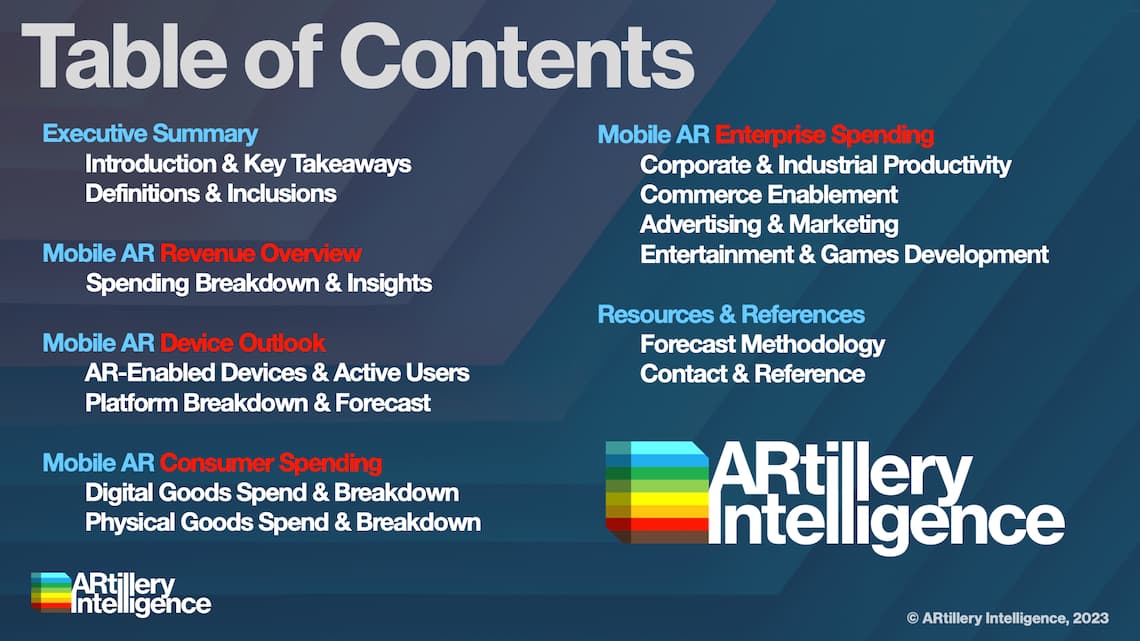
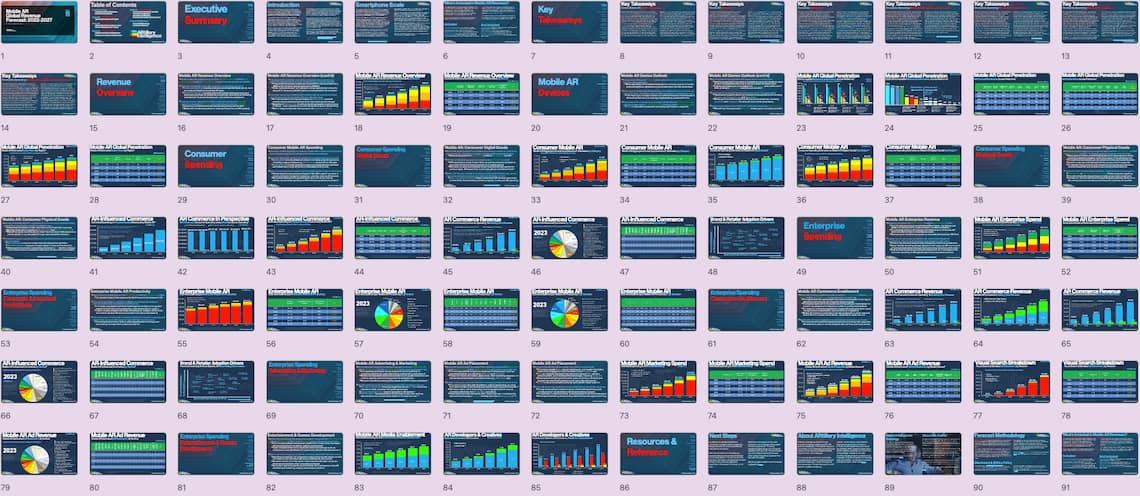
The fastest and most cost-efficient way to get access to this report is by subscribing to ARtillery PRO (Startup tier or higher for forecast access). You can also purchase it a la carte.
ARtillery Intelligence follows disciplined best practices in market sizing and forecasting, developed and reinforced through its principles’ 17 years in research and intelligence in tech sectors. This includes the past 7 years covering AR & VR as a primary focus.
This report focuses on mobile AR revenue projections in various sub-sectors and product areas. ARtillery Intelligence has built financial models that are customized to the specific dynamics and unit economics of each. These include variables like unit sales, company revenues, pricing trends, market trajectory and several other micro and macro factors that ARtillery Intelligence tracks.
This approach primarily applies a bottom-up forecasting methodology, which is secondarily vetted against a top-down analysis. Together, confidence is achieved through triangulating revenues and projections in a disciplined way. For more information on what’s included and not included in the forecast (a key consideration when evaluating the findings) see the next slide.
More about ARtillery Intelligence’s market-sizing methodology can be seen here and more on its credentials can be seen here.
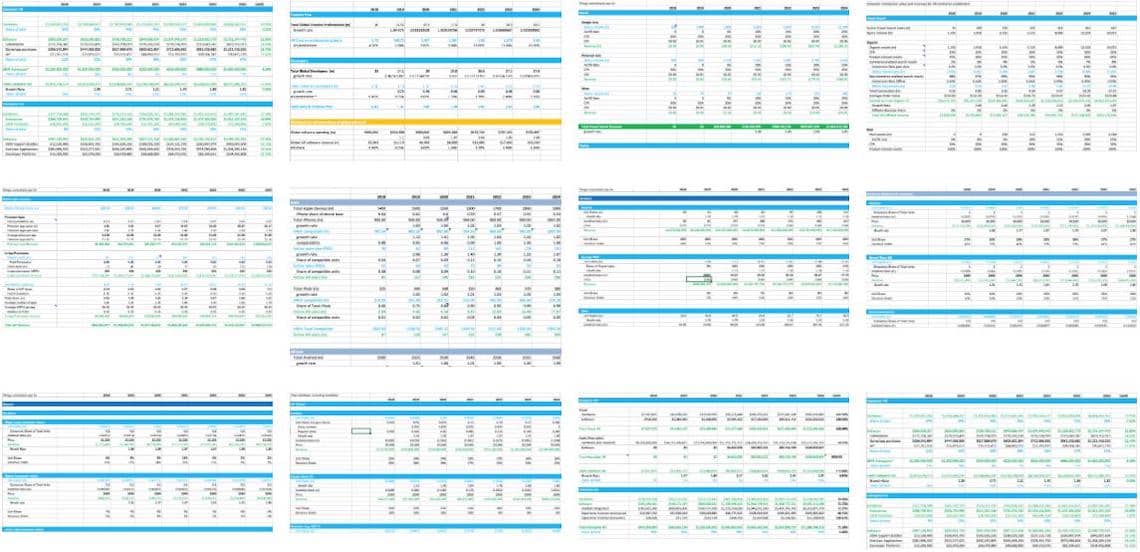


Unless specified in its stock ownership disclosures, ARtillery Intelligence has no financial stake in the companies mentioned in its reports. The production of this report likewise wasn’t commissioned. With all market sizing, ARtillery Intelligence remains independent of players and practitioners in the sectors it covers, thus mitigating bias in industry revenue calculations and projections. ARtillery Intelligence’s disclosures, stock ownership, and ethics policy can be seen in full here.
Checkout easily and securely.
Ask us anything

